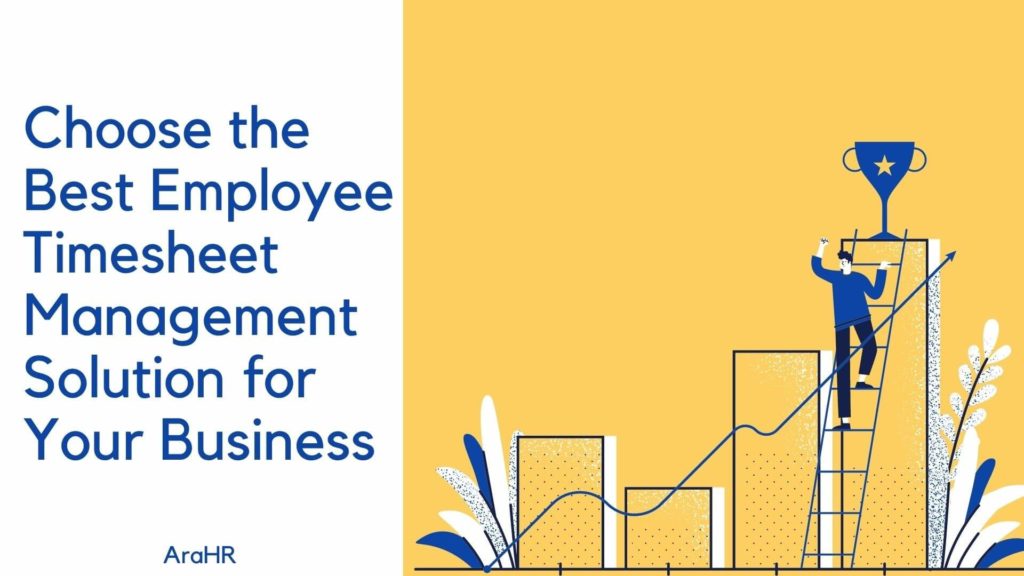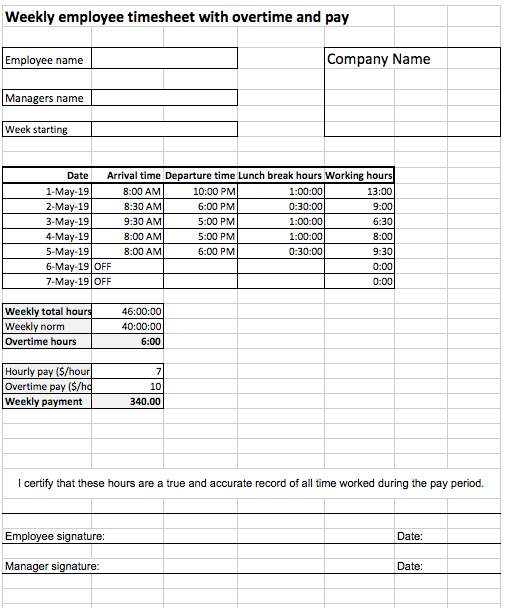
The first-ever employee timesheets were daily records made by an administrator who severely watched the clock on the wall. In the XIXth century, the industrial revolution made it impossible for a single administrator to watch hundreds of employees, so the punch cards took their place. It was easier and faster to allow the employees to record themselves the time when they arrived and left work.
Nowadays, you have a wide range of employee timesheet management solutions. Although the old methods are still in place, more and more companies adopt modern digital solutions. Some companies are using automatic systems to track employees’ activity. Others rely on access badges. Many of them use dedicated software and store data in the cloud. However, the existence of so many different employee timesheet management solutions is proof that none of them is the best solution. So how can you choose the best employee timesheet management system for your business?
Types of employee timesheet management solutions
First of all, you should know all the available options. How many employee timesheet systems are, and what does each of them offer? Here are the major categories of employee timesheet management solutions:
- Employee timesheet management on paper – They seem old-fashion but are still in use. Employees write the time and sign on a sheet of paper each day, when they arrive at work and when they finish their work hours. An administrator collects the files at the end of the month and reports the data to the accounting department. This system is free but uses a vast amount of paper each month and is hardly an eco-friendly system.
- Employee timesheet management in Excel – Excel spreadsheets represent the perfect for well-structured records. Excel also provides calendars, time formats, and formulas for computing the amount of time an employee has worked in a day or month. There are many free Excel timesheet templates available. However, you need to buy a license for Microsoft Excel. Alternatively, you can use similar software that doesn’t require a license, like OpenOffice or cloud-based tools such as Google Sheets.
- Dedicated timesheet management software – This solution provides tailored tools that adapt to your business’s needs. The data is processed manually, but you get periodic updates and maintenance, custom reports, and automatic backups. The software can run offline or online, with storage space in the cloud. While you can find free dedicated timesheet management software, most solutions for large businesses require a yearly license or monthly payments.
- Automatic timesheet management – Many businesses choose to use the building’s access system or biometric systems to track how much time employees spend at the office. Working hours are recorded automatically, and this can save a lot of time. Even if the data is not 100% accurate, many companies prefer to have an overall situation without bothering employees with daily timesheet management. Other automatic timesheet management solutions track employees’ activity using software that records how employees use their workstations. Such algorithms use state of the art technologies, and some of them even artificial intelligence to learn how an employee uses the computer and shares working hours between different tasks. Nevertheless, automatic timesheet management solutions are expensive and can raise many ethical problems.
- Employee timesheet management using access cards – Another alternative to classic timesheet management systems is recording information provided by access cards and biometric surveillance systems. Employees are identified when entering or leaving the office and data is automatically saved to track their working hours. However, these systems are expensive. They have other drawbacks too, such as recording data each time an employee exits the building even if it’s for work purposes, the possibility of exchanging access cards between employees, and losing data due to system malfunctions.
Things to consider when you choose an employee timesheet management solution
After doing your market research and finding out the available timesheet management alternatives, you should consider your business’s needs. It’s useless to dream at a sophisticated solution when you don’t have the budget for it. Also, choosing the cheapest solution when you have to manage hundreds of employees working in different time zones can create chaos and increase overall costs. Here is a list of things you should consider:
- Budget;
- Number of employees;
- Working locations and their facilities;
- Hardware resources and IT support;
- Computer skills of the employees;
- Internet connection;
- Maintenance costs;
- Company’s culture.
Nice-to-have features of digital employee timesheets:
Let’s face it: you probably won’t choose a paper-based timesheet in 2020. Thus we can focus more on digital solutions and help you decide between them. Digital timesheets can be amazing, but if they don’t fit your employees’ computer skills and hardware and software resources, they won’t help you. So, first of all, make sure the timesheet is accessible to your employees. For example, if your employees have never worked with Excel, it’s pointless to choose an Excel-based timesheet solution. Better go for dedicated software, with a user-friendly interface and many automatic processes. Nevertheless, prepare tutorials and workshops to ease employees’ accommodation with the new system.
To make things easy for everybody (employees, managers, the HR department, and the accounting department) look for the following features:
- Online timesheet app with storage space in the cloud;
- Customizable number of employees;
- Tailored reports and statistics;
- Automatic backups;
- Automatic updates;
- Payroll integration;
- Maintenance included.
In conclusion
While time tracking automation can save a lot of time, you need to use a suitable time and attendance solution. We recommend staying away from free timesheet solutions, as most of the cases there are some strings attached. Moreover, when you have to manage remote work, part-time, and employees with different labor policies, you can’t rely on automatic systems anymore. Employee timesheet management has to be transparent, accurate, and flexible. It’s important for maintaining employees’ work satisfaction and motivation. Thus, in many cases, employee self-service is empowering and builds trust and good work relations. It’s up to you to choose the best employee timesheet management solution for your business. But keep in mind that it has to please all people involved, from employees to managers.
